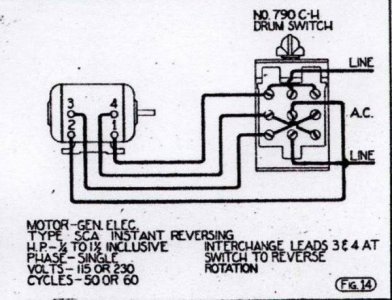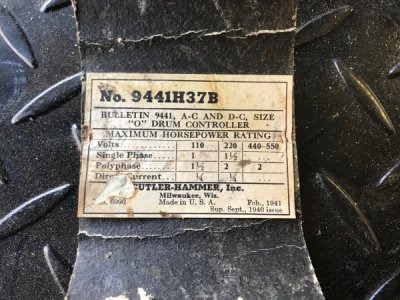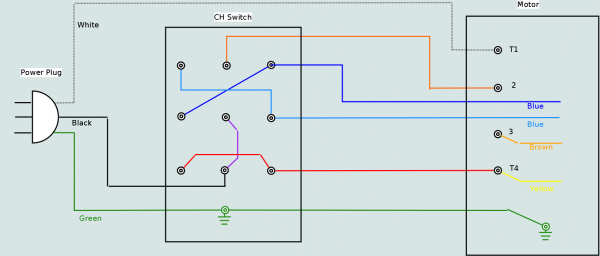I have several of those motors that have been swapped out on my machines. Maybe not that
exact model, but similar. Do watch the cap, they are often a flat pack mounted in the base of the motor. No longer available new, they can be found but usually with difficulty and usually the seller is proud of what they have. A regular cap can do the same job, just figuring out a way to mount it.
In each instance, each motor was reversible externally, without having to break things down. Make a good drawing of where each wire is terminated
before disassembling anything. Then, disconnect all the loose wires, including the line cord. Unplugged, of course.
With your ohm-meter set up for RX10 or RX100, look for continuity among the several pairs. One pair will be a stable connection. The other will taper as it is read. Confirm this by reversing the OM leads. The stable one is the RUN winding. The tapering one is the START winding, which includes the centrifugal switch and the capacitor. With those four leads identified and marked, reassemble the switching network and line cord. To reverse the motor, simply exchange the two START winding leads. Confirm this a few times, whatever number you are comfortable with.
Now, to switching it. Each switch will have a nominally different contact arrangement. I received today, a switch from a Chinese source (eBay) that had an acceptable, albeit different, connection diagram. But for 10 bux??? I ordered several more, just to have on hand. (I'm a retired electrical man) Plastic, but well made, and good contacts.
In each case, there will be two contacts that reverse and a third that makes up in both directions. The connections for this are widely covered herein and there being so many different switches, I won't specifically explain each one. The end result is to switch the RUN winding and reverse the START winding. Both at the same time, of course.
Bill Hudson




